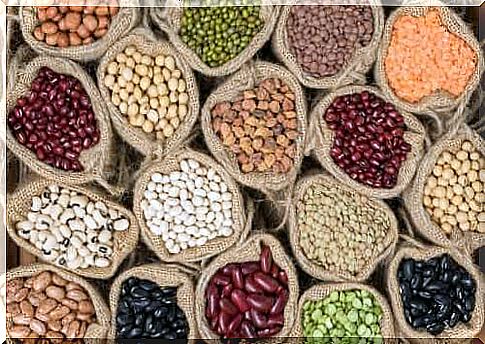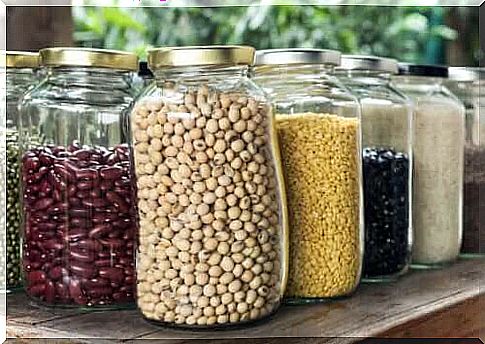Legumes: 5 Curiosities To Know

Legumes are a food of vegetable origin whose environmental impact and economic costs are low. Also, due to their other nutritional value, they should be consumed at any stage of life at least three times a week. For this reason we will introduce you to five curiosities to encourage you to include them in your diet.
Five curiosities about legumes that you may not know
1. They have an international day dedicated to them
Since 2016, February 10 has been chosen by the Food and Agriculture Organization of the United Nations (FAO) to celebrate the International Legume Day. The goal is to promote their consumption among the population since they are not very present in the daily diet of people, especially from the 1980s onwards.
This day also aims to raise awareness of the richness of nutrients such as proteins, fibers, carbohydrates, magnesium, potassium and calcium present in legumes. Legumes are used all over the world and can be prepared in a thousand different ways.

2. Do legumes contain proteins of high biological value? The eternal debate …
When a food is said to have a high biological value, it means that it provides essential nutrients for the body. In this case, we are talking about the amino acids that make up the protein chains.
While it is true that legumes are deficient in methionine and cysteine, there are exceptions such as chickpeas, beans and soy. To have these amino acids, the rest of the legumes must be associated with cereals such as, for example, rice or millet.
This means that in order to get protein, we don’t necessarily have to associate it with meat, fish or eggs. In fact, if there is one thing that characterizes our diet, it is excessive protein intake. Therefore, consuming legumes is unlikely to have a protein deficit.
3. Peas are legumes despite their green color
Yes, that’s right. As much as peas resemble vegetables from a nutritional point of view (or as the advertisements for frozen products say), they are legumes. What makes the difference between one food group and another is how they are found in nature.
On the one hand, we have legumes which are dry seeds that come from the pods of plants. On the other hand, there are the vegetables which are the edible part of the green plants such as the leaves or the stem. It’s a good idea to make your kids a nice plate of peas for lunch or dinner, but not as a substitute for vegetables.
4. Peanuts are also legumes, even if one thinks the opposite (one of the most interesting curiosities)
This is one of the curiosities that might surprise you the most, since hardly anyone has ever considered it. Like peas, peanuts are seeds found inside a pod.
And there is something more curious. When you buy any dried fruit mix at the supermarket, it is very rare that it contains peanuts. Typically these mixes contain nuts, various seeds, toasted corn, and sometimes raisins.

5. They are good for the gut microbiota despite the discomfort they sometimes cause
Legumes are a group of foods rich in highly fermentable fiber. That is, they feed our intestinal bacteria and promote the assimilation of nutrients and the proper functioning of the immune system. They help, among other things, reduce the risk of constipation, obesity and colon cancer.
At this point, we can say that it is advisable to include them in your diet. However, we must keep in mind that they contain galactans, responsible for the gases and bloating that can create discomfort. What happens is that when there is an alteration of the microbiota or of the intestinal wall, the legumes ferment and cause the symptoms we have just mentioned.
Therefore, if you often have discomfort, our advice is to choose legumes such as red lentils (which are already peeled) and soak them for at least 24 hours before cooking. You can also add cumin or anise to the cooking water.
As you have seen, legumes can be part of a healthy and balanced diet despite being highly underestimated. If you don’t like one, you can try another one. In addition, there are many recipes and you can prepare them in many ways: salads, creams, soups, etc.









